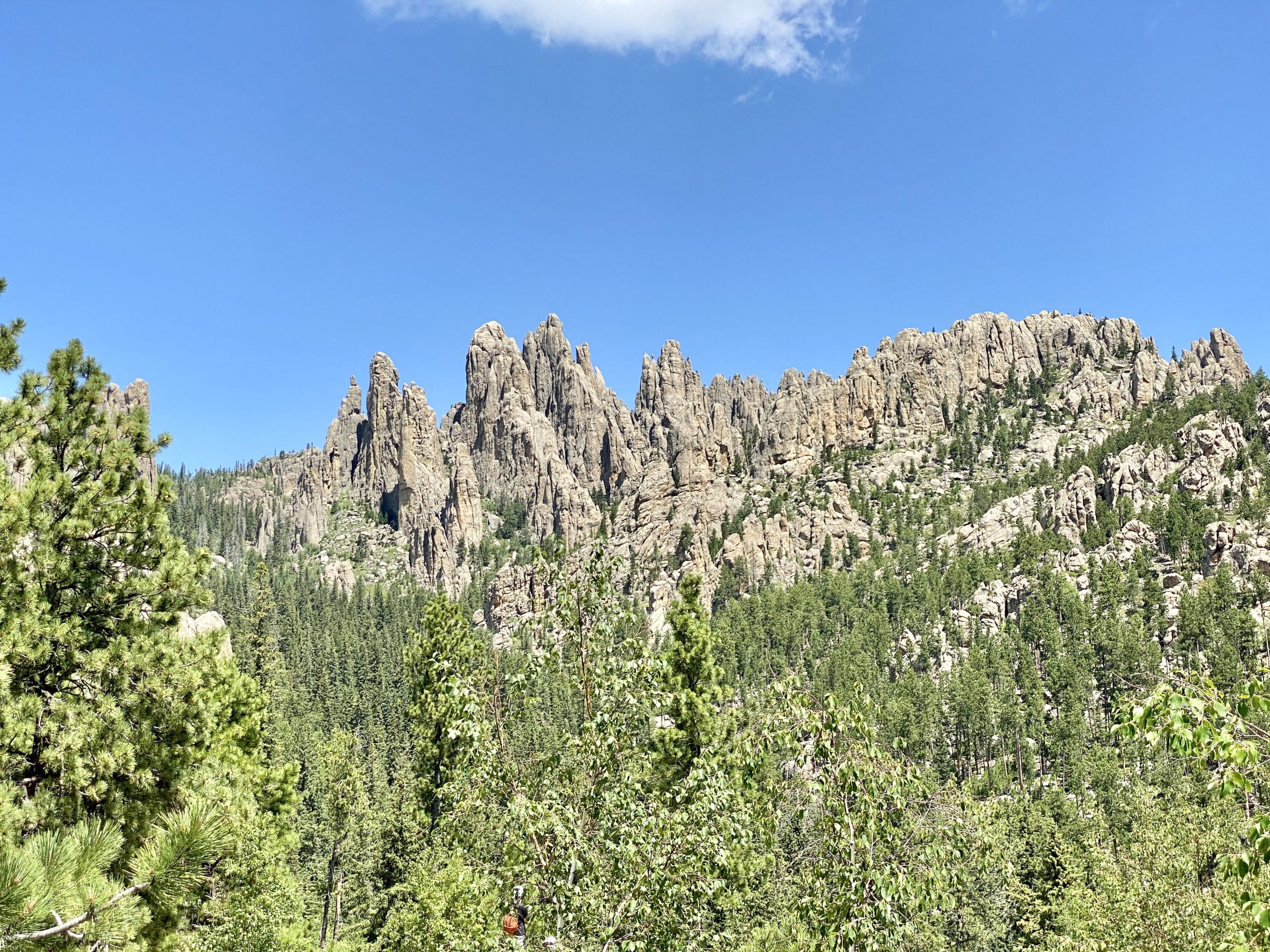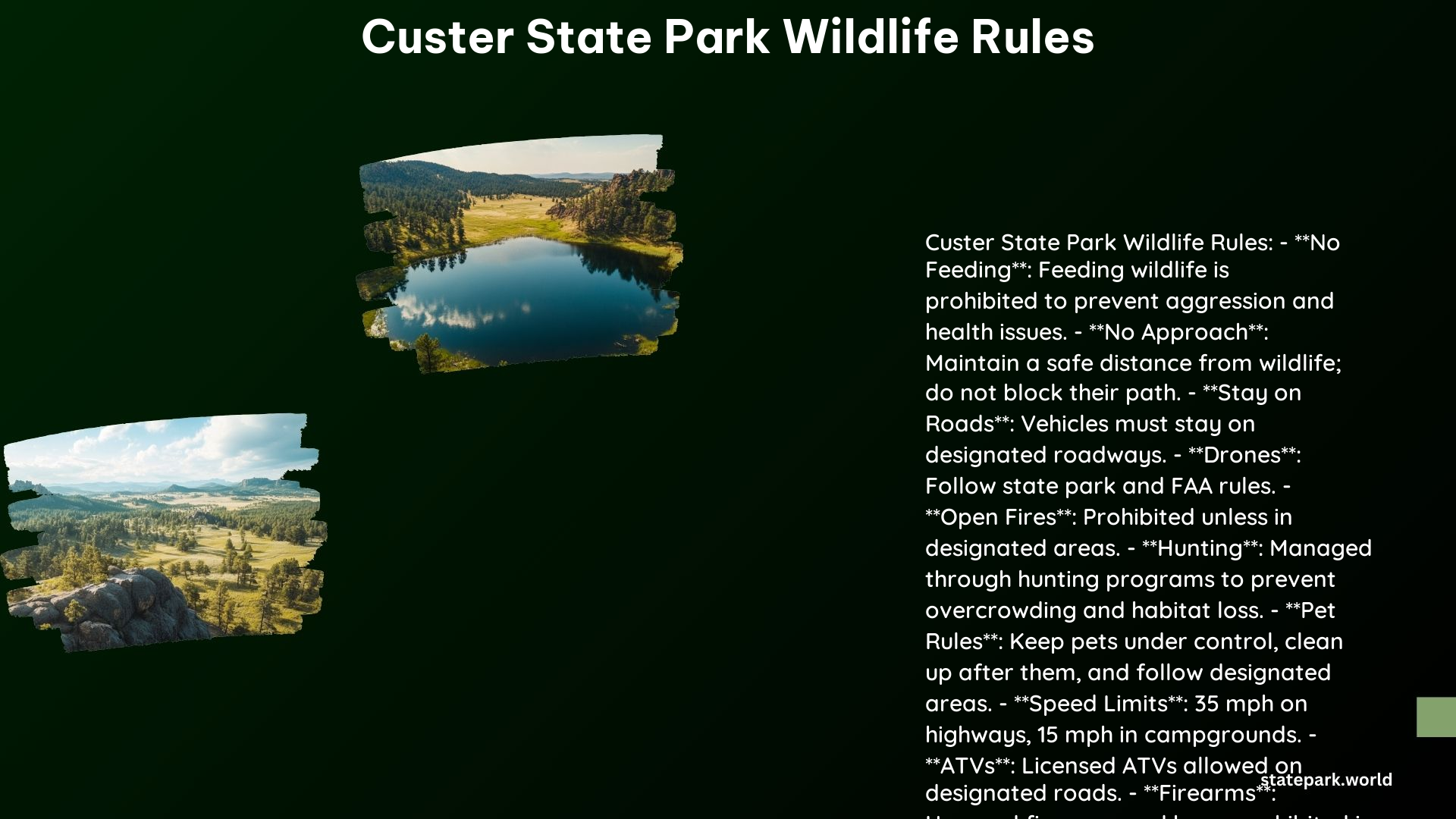Custer State Park in South Dakota is a natural wonder teeming with diverse wildlife, from majestic bison to elusive mountain lions. To ensure the safety and well-being of both visitors and the park’s inhabitants, Custer State Park has established a set of rules and regulations governing interactions with wildlife. As a state park touring enthusiast or tour planner, it’s essential to familiarize yourself with these guidelines to have a safe and enjoyable experience.
Rules and Regulations for Interacting with Wildlife

-
Do Not Approach Wildlife: Maintaining a safe distance from wildlife is crucial. Visitors are strictly prohibited from approaching any wildlife, including the iconic Custer State Park bison, as they can be unpredictable and potentially dangerous.
-
No Feeding: Feeding wildlife is strictly forbidden within the park. This practice can lead to aggressive behavior and health issues for the animals, as their natural diets are disrupted.
-
Keep Pets Under Control: Pets must be kept on a leash and under immediate control at all times. They are not allowed on designated swimming beaches, in park buildings, or on the Summit Trail at Bear Butte State Park.
-
Respect Wildlife Habitat: Visitors must refrain from disturbing or damaging the natural habitats and nesting areas of the park’s wildlife.
Park Regulations Regarding Feeding and Disturbing Wildlife

-
Prohibited Activities: Jumping or diving from cliffs, rock formations, or bridges into the water is not allowed at Palisades State Park, Custer State Park, and Big Sioux Recreation Area.
-
No Recreational Spotlighting: Recreational spotlighting, the use of artificial light to locate animals, is prohibited from 10 p.m. to sunrise from September 1 to January 31.
Best Practices for Wildlife Management and Preservation
-
Hunting: Hunting is used as a tool to manage wildlife populations within Custer State Park, helping to prevent overcrowding and ensure an adequate food supply for the animals.
-
Wildlife Viewing: When observing wildlife, use binoculars, spotting scopes, or telephoto lenses to minimize stress to the animals and maintain a safe distance.
Enforcement of Park Regulations
-
Park Rangers: Park rangers are responsible for enforcing the rules and regulations within Custer State Park, ensuring the safety of visitors and the protection of the park’s natural resources.
-
Fines and Penalties: Violating the park’s rules can result in fines and penalties, which help fund wildlife management programs and conservation efforts.
Additional Information
-
Camping and Fire Safety: Campfires are only permitted in designated campsites and must be fully extinguished before leaving. Visitors should also use bear-resistant food containers and keep a clean camp to avoid attracting wildlife.
-
Weather and Safety: Checking local weather, road, and trail conditions before an outing is essential, as the park’s weather can be unpredictable and potentially hazardous.
By familiarizing yourself with and adhering to the Custer State Park wildlife rules, you can help ensure a safe and responsible exploration of this natural wonder, while also contributing to the preservation of the park’s delicate ecosystem.
References:
– South Dakota Game, Fish, and Parks. (n.d.). Regulations. Retrieved from https://gfp.sd.gov/camping-regulations/
– South Dakota Game, Fish, and Parks. (n.d.). Hunting in Custer State Park. Retrieved from https://gfp.sd.gov/csp-hunting/
– Custer State Park Resort. (n.d.). Wildlife. Retrieved from https://www.custerresorts.com/activities/activities-experiences/wildlife
– USDA Forest Service. (n.d.). Outdoor Safety & Ethics. Retrieved from https://www.fs.usda.gov/main/custergallatin/learning/safety-ethics
– South Dakota Game, Fish, and Parks. (2022). CUSTER STATE PARK. Retrieved from https://gfp.sd.gov/userdocs/docs/tatanka_2022.pdf
